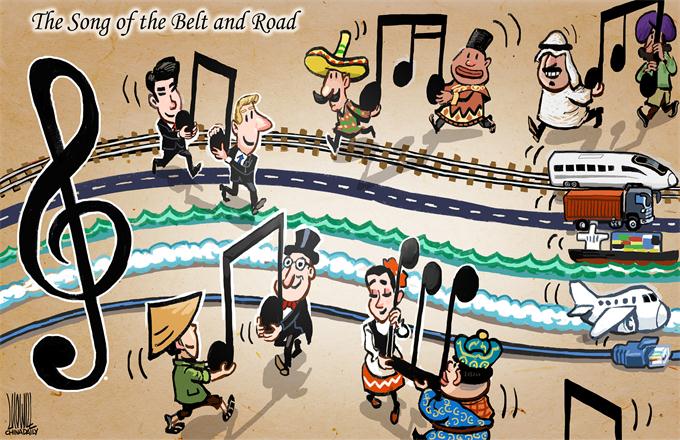A convincing initiative for regional connectivity and global trade
China's One Belt One Road Initiative was conceived in 2013 in its entirety by the strategists and planners in China under the leadership of President Xi Jinping. This extensive infrastructure network of land, rail and sea covers more than 100 countries and an unending budget that cumulatively could be in the region of US$40 trillion to US$80 trillion when in maturation.
In a short span of three years from conception to what it is today, this initiative, now popularly known as B&R, is a new reality that has taken off and gone beyond the imagination of many modern day planners. Sixty-five countries from China through Central Asia to Europe by land and a sea route covering South East and South Asia through the Middle East, linking Africa to Europe to form the southern belt, present a problem that would challenge the wits and wisdom of the ablest politicians and statesmen just to be able to sew the countries into a complete tapestry.
The countries involved in B&R are as diverse in culture, race, religion, political ideology, political rivalry and historical enmity that the thought of convincing them to agree, to be part of the project, must be a nightmare to the ablest in diplomacy. And China has pulled it through, to successfully bring aboard these mixed bags of countries, is not just shrewd diplomacy but also by hard economics of what each country would stand to benefit from it. To be able to win the confidence of the leaders of these countries, that everyone stands to benefit from a win-win partnership, is itself a great achievement for China and Xi Jinping's team of negotiators. The task is more daunting if one is preview to the doomsayers and negative commentaries and mischievous doubts posed by those countries that did not want this project to succeed, let alone to take off in such a short time.
Every single country that voluntarily participates in this international initiative must have convinced themselves and been able to see for themselves the goodness of the project from their own perspective and understanding and interests, not from what the Chinese told them. With all the differences and negative external influence and forces working against this project, some appearing unbridgeable due to historical enmity and political divisiveness, no one, not even Xi Jinping and his team, is able to win them over unless they themselves are willing to come on board.
The B&R is therefore an initiative that all participating members are convinced, must be convinced, that it is beneficial to them in the long run, in trade, communication, economic and political development. The benefits of B&R speak for themselves and are the most important factors in winning the hearts and minds of the participating nations.
For the coastal states or states that have easy access to seaports, the One Belt aspect of the B&R initiative would only enhance and improve their positions in a more interconnected world. B&R is particularly important to the landlocked countries in Central Asia and Eastern Europe, central Russia and the western regions of China. These countries and regions have been disadvantaged by their inability to access the sea trade routes and have lagged behind for centuries in economic development. B&R has transformed the traditional reliance on the sea for transportation and opened up these countries to trade freely using land routes, by rail and by roads, freeing themselves from having to depend on seaports. These countries would now be in the mainstream of international trade, in the main highways of trade, communication and transportation, turning themselves into new centers of economic growth and development. Many of the cities in these landlocked countries would become new rich economic centers, finding their rightful place as the equals of New York, London, Rotterdam, Paris, Hong Kong and Shanghai in the 21st Century.
There will be realignment of trade routes and transportation hubs as a result of B&R, and many cities would reinvent themselves and transform into new vibrant commercial centers of trade and economic activities. Khazakstan, Malaysia and Greece would become new communication hubs of a new future and the biggest beneficiaries of B&R.
The B&R initiative is a new catalyst, a bright spark that would bring about more global trade and economic development in an otherwise staid and slumbering world economy. Thousands of bilateral and multilateral projects have taken off and many more are in the pipeline. Hundreds of bilateral and multilateral agreements between governments have been signed. B&R is not a China initiative but an international cross-border project that needs the cooperation and active participation of all the countries to be successful.
B&R is what the world needs today. The flow of capital, goods, people and so forth would be a boost to economic activities and vibrancy, to open up new regions of growth, to bring about prosperity and interconnectivity to all the countries in the project and to benefit the world in general. The success of the B&R is not just for China but for all the participating countries and the whole world.
The author is a political observer from Singapore.



















